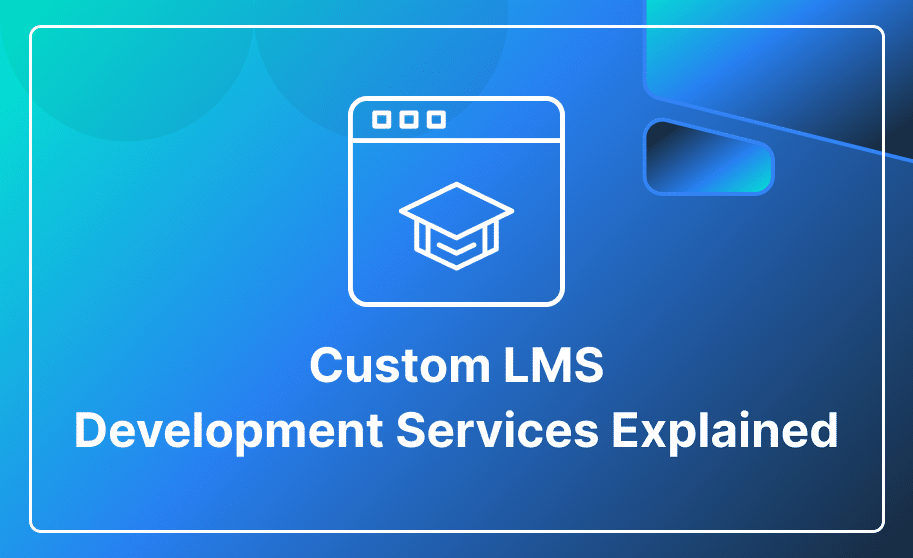In the past few decades, there has been remarkable growth in software development outsourcing. Approximately 65% of all companies outsource their entire development process.
In software outsourcing, companies choose to have custom software solutions developed by a third party.
Outsourcing software development offers numerous benefits, such as reducing costs, improving efficiency, reducing risks, and enhancing security.
In today’s digitalized business world, companies can access the expertise of top software developers worldwide. Both well-established companies and startups are using software outsourcing to build their products.
What is Outsourced Software Development?
Outsourcing software development is a business strategy where a company delegates a software development project to an external company rather than executing it in-house. The process of software outsourcing begins when a business chooses to build a software project with the help of a third party.
Outsourcing helps businesses of all sizes to gain a competitive edge. It allows them to complete IT projects more quickly by using the knowledge, technical talent, and flexible team scalability provided by specialized outsourcing partners.For a comprehensive understanding of outsourcing, explore our blog, “Software Engineer Outsourcing: Benefits and Best Practices.”
Step-by-Step Guide to Software Development Outsourcing
Outsourcing software development offers benefits such as increased productivity, improved product quality, and cost-effectiveness. However, successful outsourcing in IT development requires careful planning, and creating a solid outsourcing strategy is the first step in choosing an outsourcing partner to meet your requirements.
Follow the following steps for the best strategy for outsourcing:
- Define your Goals:
The first step involves defining the goals and scope of the project. At this stage, you decide what you want to create, the budget allocated for construction, the goals you wish to achieve, and the overall timeline. Write a Scope Statement for your project, which includes the following steps:
- Identify major deliverables
- Listing project outputs
- Setting project limitations
- Estimating hourly rates
- Establishing guidelines for change requests
- Obtaining sign-off
- Outsourcing Research:
When you have the details of your project in your hand, you can start researching outsourcing companies that can successfully complete your project. It involves searching for suitable companies with the expertise and industry experience needed for your project.
IT Outsourcing development companies are categorized into three types based on their location: offshore, onshore, and nearshore outsourcing.
Onshore: Choosing an outsourcing partner from your own country.
Offshore: Choosing an outsourcing partner from a distant country.
Nearshore: Choosing an outsourcing partner from a nearby country.
3. Choose the Right Outsourcing Model:
One of the best advantages of outsourcing software development is that you can manage your outsourced team according to your preferences.
You can use various models to outsource development, maintenance, and testing of your software solution that aligns with your business requirements, budget, and long-term plans.
Here are four models you can use to manage your team:
Project-based Model:
Startups and enterprises with limited or no in-house development teams often choose a project-based software development model. A vendor fully controls the entire software development process and is committed to meeting all the deadlines and project specifications. The customer pays for the hours needed to complete the project scope or agrees on a fixed price at the beginning of their collaboration.
Dedicated Team Model:
This model is the most suitable option for long-term projects with a specific product niche.
In this model, you hire a team of skilled professionals from a third-party outsourcing vendor. These development outsourced professionals work as an extension of your main team.
When choosing outsourcing developers for your team, you can assess them through a brief coding test to check if they are ready to handle the essential tasks of developing software for your company.
A dedicated team includes software engineers, designers, business analysts, QA engineers, and a project manager.
Staff Augmentation Model:
The staff augmentation model is ideal for companies that lack expertise in a specific technology or domain or don’t have enough developers for a quick and seamless development process. In this model, they expand their teams by hiring remote professionals while keeping full control and responsibility over their project.
Fixed-Price Model:
A fixed-price contract allows a customer to assign the project workload, and receive a predictable development scenario, and a fixed-price based on the accurate assessment of the scope of work and timeline. Any additional modifications not pre-agreed upon during the development process can lead to adjustments in pricing and timing.
4. Explore Potential Companies:
After finding a vendor that you feel positive about, thoroughly study the company: explore the industries they develop for, the technologies they work with, review case studies and customer reviews, the values and culture of the company, and verify if their past experiences align with your project’s scope. Once you have done this, you can schedule a call with the company representatives to discuss the key points of your future collaboration. Free feel to ask for the CV of any outsourcing developer who will be working on your product.
5. Choose a Communication Tech Stack:
After finalizing everything, the final step in the outsourced development process is selecting communication channels to track the development process:
Some reliable communication channels are:
- For Project Management: ClickUp, Basecamp, and Trello
- For Live Meetings: Zoom, Google Meet, and Microsoft Teams
- For Chat-based Communication: Rocket, Slack, and Chanty
- For Formal Communication: Emails

How Much Does It Cost to Outsource Software Development?
One important thing to note is that each project is unique, making it challenging or almost impossible to have a standard pricing template. If you have researched into it, you might have noticed that software engineer outsource costs vary from $30 to $150 or even more per hour, and estimated software expenses range from $20,000 to $150,000 and more.
Additionally, if you outsource your project to a software development company, it usually costs between $25 to $45 per hour. Hiring a middle/senior dedicated developer can cost around $20 to $50 per hour, depending on their skills.
Let’s try to make some rough estimates:
A Simple Proof Concept Applications
- · Time Frame: 4 to 8 weeks
- · Cost: $25k to $35k
Medium-Sized Commercial Web Applications
- · Time Frame: 4 months
- · Cost: $60k to $100k
Large Enterprise Applications
- · Time Frame: 8 months or more·
- Cost: $150K and more
Why Choose Hashlogics as Your Outsource Partner
- We are a leading software development company with extensive hands-on experience and substantial positive reviews from satisfied customers.
- Our dedicated software teams consist of skilled developers with expertise in creating web and mobile solutions, IoT software development, and Cloud and DevOps services, for various industries.
- We are skilled at handling time-zone differences. Our managers are responsible for providing customers with daily updates on the project’s scope and keeping them informed about any challenges.
- We firmly believe that your success is integral to ours, and we consistently take responsibility for delivering high-quality results.
If outsourcing software development is on your mind, connect with us directly for a detailed conversation about the best IT outsourcing model for your project.
Conclusion:
Outsourcing software development is a good idea for businesses that prefer not to have their own in-house development team. Apart from cost savings, it also saves time and allows you to use the latest technologies. However, finding a suitable software development company can be challenging. Yet, spending time on research and having a clear outsourcing plan can assist you in finding the right fit for your business.
The right outsourcing partner can integrate into your current team with minimal disruptions while delivering top-notch technical performance. Hashlogics is a trusted provider of scalable, budget-friendly solutions designed to meet your business and financial goals.A similar post like this “What Drives Companies to Outsource Their IT Support Structure?”














